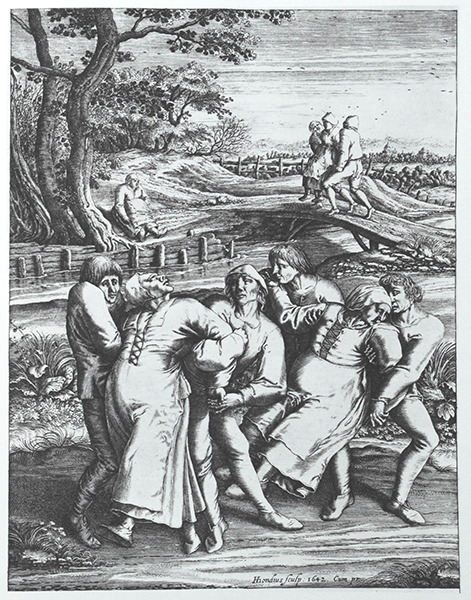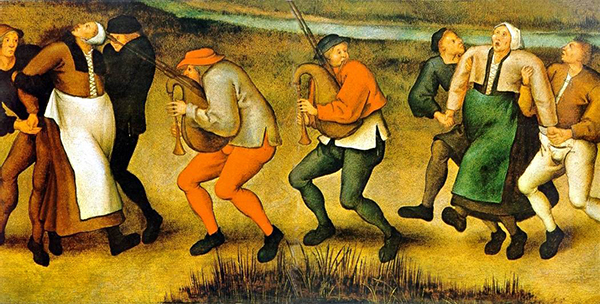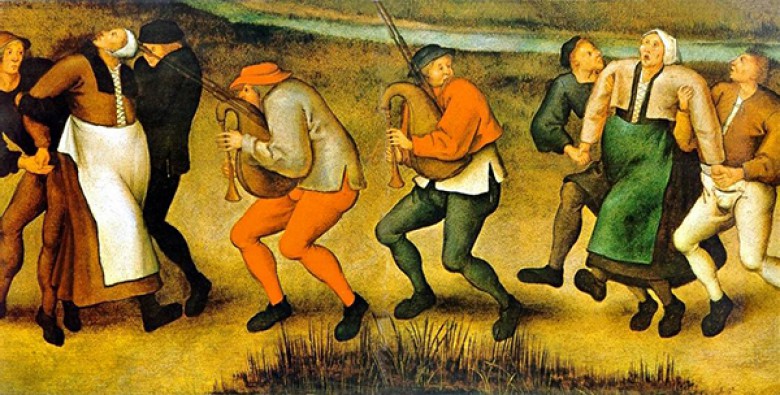31st January 2018
In my latest novel Dark Tracks, there is an outbreak of dancing sickness that our travellers are sent to investigate.
While the dancing outbreak in Dark Tracks is fiction, it is based on fact. There were a number of dancing plagues recorded in Europe up to the 17th century. One of the largest and most documented occurred in Strasbourg in 1518. It started with one woman, Frau Troffea, who began dancing on the streets. She was joined by more and more people, with the dancers eventually totalling over 400. Physicians were consulted, and explanations were sought. While they concluded that the dancers had ‘hot blood’ and that the cure was more dancing, each day, around fifteen of the dancers were dying. The outbreak stopped just as inexplicably as it had started.
There are a number of possible explanations put forward to explain the dancing sickness. One is that it is simply food poisoning – that people were affected after eating ergot, a mould that grows on some grains and can cause hallucinations and convulsions.
Another explanation is that the dancing was a mass psychogenic illness. The dancing of 1518 in Strasbourg occurred at a time when life was difficult for many people. There had been famine, poverty and sickness. Other dancing outbreaks tell the same story – they seem to happen when people are in great despair. They also are happening at a time when the Church plays a huge role in people’s lives, and when many were superstitious and fearful of demonic possession.
The idea of this mass hysteria and of such a large number of people acting this way may seem impossible to modern minds, but the dancing could well have been a reaction to overwhelming stress and hopelessness. It was a fascinating subject to research and write about.
‘It was obvious that things were badly wrong. The doors of the church which faced the square stood wide open and the travellers saw a family struggle with an elderly grey-haired man who was clawing his way out of the door as his son tried to drag him back inside the sacred space. In the square outside, a fiddler in a bright, tattered coat of motley colours was turning the pegs on a tuneless fiddle and nearly two dozen people were hopping and skipping from one foot to another. Some of them were dressed in their finest clothes, as if going to a harvest dance which had dragged on too long; some of them were in tatters, as if they had ripped their clothes dancing through brambles or pulling away from people trying to hold them back.’
Dark Tracks is out now, and can be ordered here: https://goo.gl/mzUoa7I hope you enjoy it.
Images: Die Wallfahrt der Fallsüchtigen nach Meulebeeck. Copper engraving by Hendrik Hondius (1573–1649), based on original drawing by Pieter Brueghel. 1564/1641. Via Wikimedia Commons. Dance at Molenbeek. By Pieter Brueghel the Younger (1564–1638), after drawings by his father. Via Wikimedia Commons


